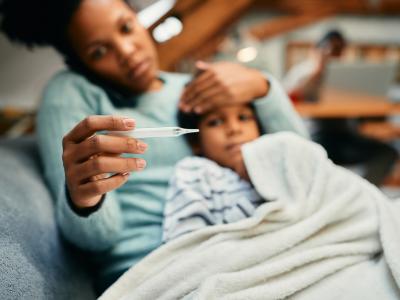Faced with new data that conflict with older findings, the US Advisory Committee on Immunization Practices (ACIP) today voted to drop its advice that the nasal-spray influenza vaccine should be preferred over injectable vaccines for children from 2 through 8 years old.
The committee's action was prompted by findings that the intranasal vaccine was not effective against influenza A/H1N1 in children in 2013-14 and that it—like other flu vaccines—has not worked well against A/H3N2 in children this season, the Centers for Disease Control and Prevention (CDC) said in a press release.
The ACIP, which shapes the CDC's vaccine guidance, "recommends that children 6 months and older get annual influenza vaccine with no preference stated for either the nasal spray vaccine or the flu shot," the CDC said. The committee vote was 14-0, with one abstention.
The committee left its annual flu vaccine recommendations otherwise unchanged, advising that nearly everyone more than 6 months old get an annual flu shot.
Recommendation made in 2014
The preferential recommendation for using the nasal-spray vaccine (also known as live attenuated influenza vaccine, or LAIV) in young children was made in June 2014, the CDC noted. It was based on evidence gathered over several flu seasons that it offered better protection than inactivated flu vaccine (IIV, or injected vaccine) did. LAIV, made by MedImmune, is sold as FluMist.
"Lacking the proof that the vaccine provides consistently better protection, the [ACIP] work group thought it better to go back to the original recommendation rather than have a preference for one product over another," the CDC's Joseph Bresee, MD, told CIDRAP News.
The CDC said that flu vaccine effectiveness (VE) estimates for the 2013-14 flu season were presented to the ACIP in October. The data showed that LAIV had "no measurable effectiveness" against H1N1 viruses in children, while the effectiveness of IIV was estimated at 60% and was statistically significant.
"H1N1 was the predominant virus in circulation during the 2013-2014 season for the first time since it emerged in 2009 to cause a pandemic," the CDC release noted.
This season, flu vaccines in general have performed poorly against H3N2 viruses in the United States and several other countries, and the CDC has pointed to a mismatch between circulating H3N2 strains and the H3N2 strain in the vaccine as a major factor. In the United States, about two thirds of circulating H3N2 viruses have differed from those in the vaccine.
The latest VE estimates from the US Flu Vaccine Effectiveness Network indicate that neither IIV nor LAIV has yielded significant protection in children ages 2 through 8 this season, the CDC reported.
The mid-point VE estimate for IIV against H3N2 in that age-group was 15% (95% confidence interval [CI], -20%-40%), and for LAIV it was -23% (CI,. -90% to 21), the CDC said. "These data suggest that neither vaccine worked well in protecting against H3N2 viruses this season, and that LAIV did not work better than IIV against the predominant H3N2 viruses circulating during the current season."
It added that some past studies had suggested that LAIV might work better than IIV against "drifted" (poorly matched) H3N2 viruses, but the data are limited.
Heat exposure seen as factor in VE
During today's ACIP meeting, a MedImmune official, Kathleen Coelingh, PhD, said company research indicates that the poor performance of LAIV against H1N1 last year was related to a mutation that rendered the H1N1 component less stable when exposed to heat.
She said a mutation known as E47 in the vaccine strain's hemagglutinin protein increased its vulnerability to higher temperatures. The company found a strong and significant correlation between the effectiveness of vaccine lots and ambient temperatures when those lots were unloaded from trucks, she explained.
Coelingh said MedImmune plans to replace the A/California H1N1 strain carrying the mutation with an antigenically smilar strain that has a more stable hemagglutinin. She expressed confidence that this will correct the problem.
In other developments, Bresee said the CDC has found that, though this year's vaccine has not fared well against the predominant mismatched H3N2 strains, it does provide some protection against H3N2 viruses similar to the one in the vaccine. He said this is the first time the agency has been able to assess VE separately by viral genetic groups.
"We found that if you separate out the different genetic groups, while the overall effectiveness against H3N2 was low, the effectiveness against the matched H3N2 was much better—it was 49%," he said. That number is closer to a typical VE level, he noted.
The 95% confidence interval for the 49% VE estimate was 18% to 89%, according to a presentation by the CDC's Brendan Flannery, PhD, during the meeting.
See also:
Feb 26 CDC press release
Feb 26 ACIP meeting agenda






















